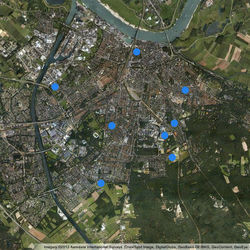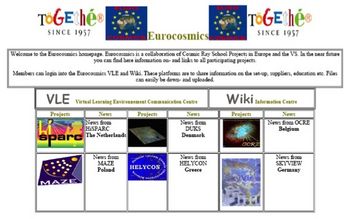About HiSPARC
Around 2003, under the guidance of the Department of subatomic physics at Radboud University in Nijmegen, an initial network of cosmic ray detectors in the Netherlands was developed: the Nijmegen Area High School Array (NAHSA). Besides a detection station on the roof of the university, various schools in the area were approached with the question whether they would actively work on "the measurement of cosmic rays".
The enthusiasm with which this initiative was received, led to the first steps towards a national organization shortly thereafter. During a meeting attended by teachers in secondary schools and scientists from Nikhef in Amsterdam, the first plans were presented for the development of a series of clusters of detectors around Dutch academic institutions for the purpose of education and research. The High School Project on Astrophysics Research with Cosmics (HiSPARC) was born. The initiative could count on a warm welcome from all the parties concerned.
Currently there are seven clusters with nearly 100 detection stations throughout the Netherlands. If you want your school to participate in analyzing data or even a sensor on the roof areas? Here you can register.
Not just within the Netherlands, the project has received enthusiastic response from abroad as well. In 2004, the Altran Innovation Award was assigned to HiSPARC. This was an incentive to launch a European partnership. The purpose of this international cooperation is to bundle knowledge and strengths of similar projects in Europe together and share experiences.
In 2005, representatives of a number of projects (including Russia and the United States) met eachother for an initial consultation. A year later, in 2006, the partners formed EuroCosmics. International meetings followed while teachers and students from Poland and other countries visited the HiSPARC schools in the Netherlands. In that year, a common proposal with the purpose of funding was formulated and presented to the European Community on behalf of 15 nationalities. Although the proposal made it to the final round of the FP-7 program and unofficial subsidy was allocated, the application finally stranded on EU budget constraints.
The number of HiSPARC detection points in the Netherlands is still growing (approximately 100). In addition, a number of projects outside the Netherlands is making use of the electronics and software developed by HiSPARC.
Bekijk hier de algemene HiSPARC brochure [pdf].


